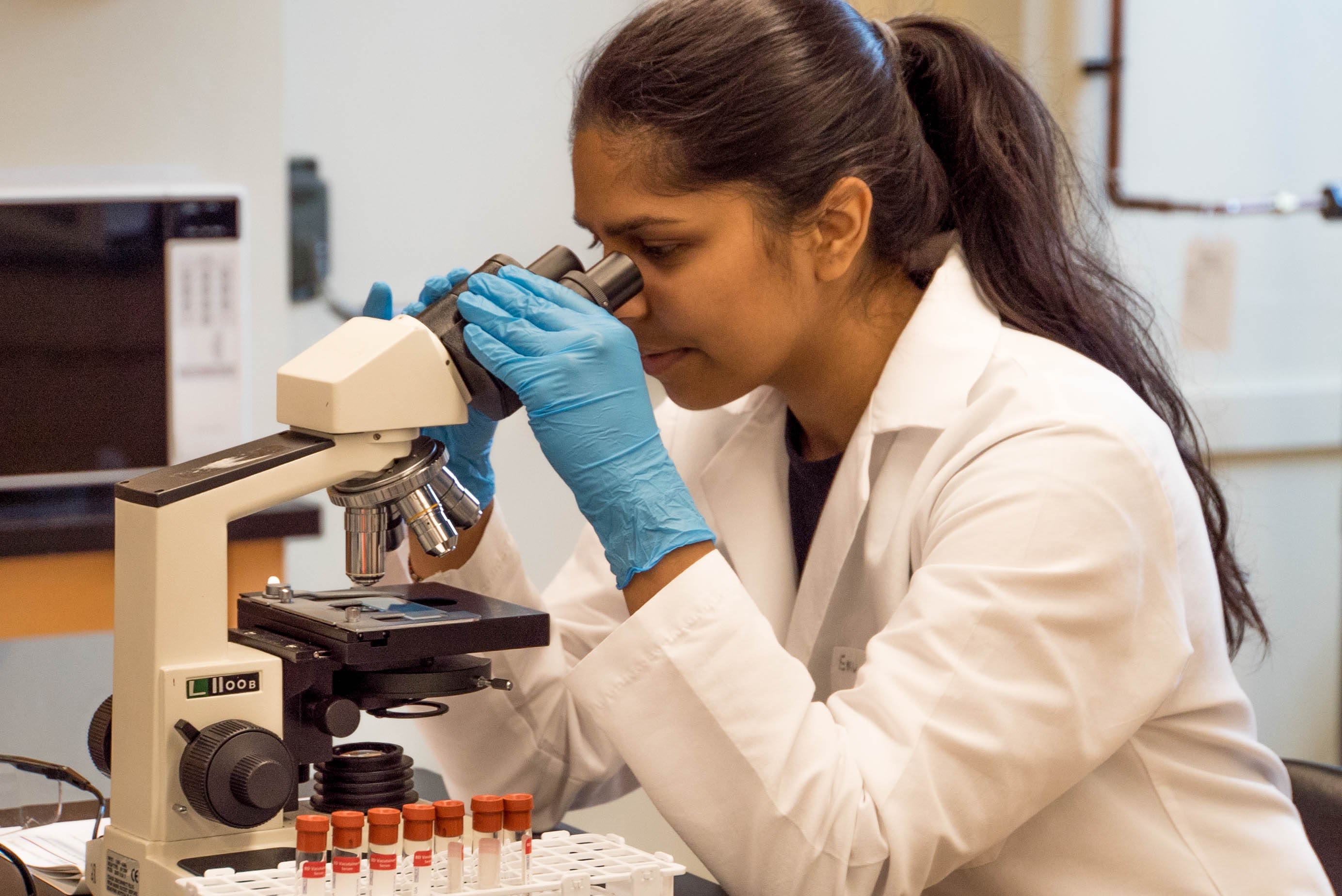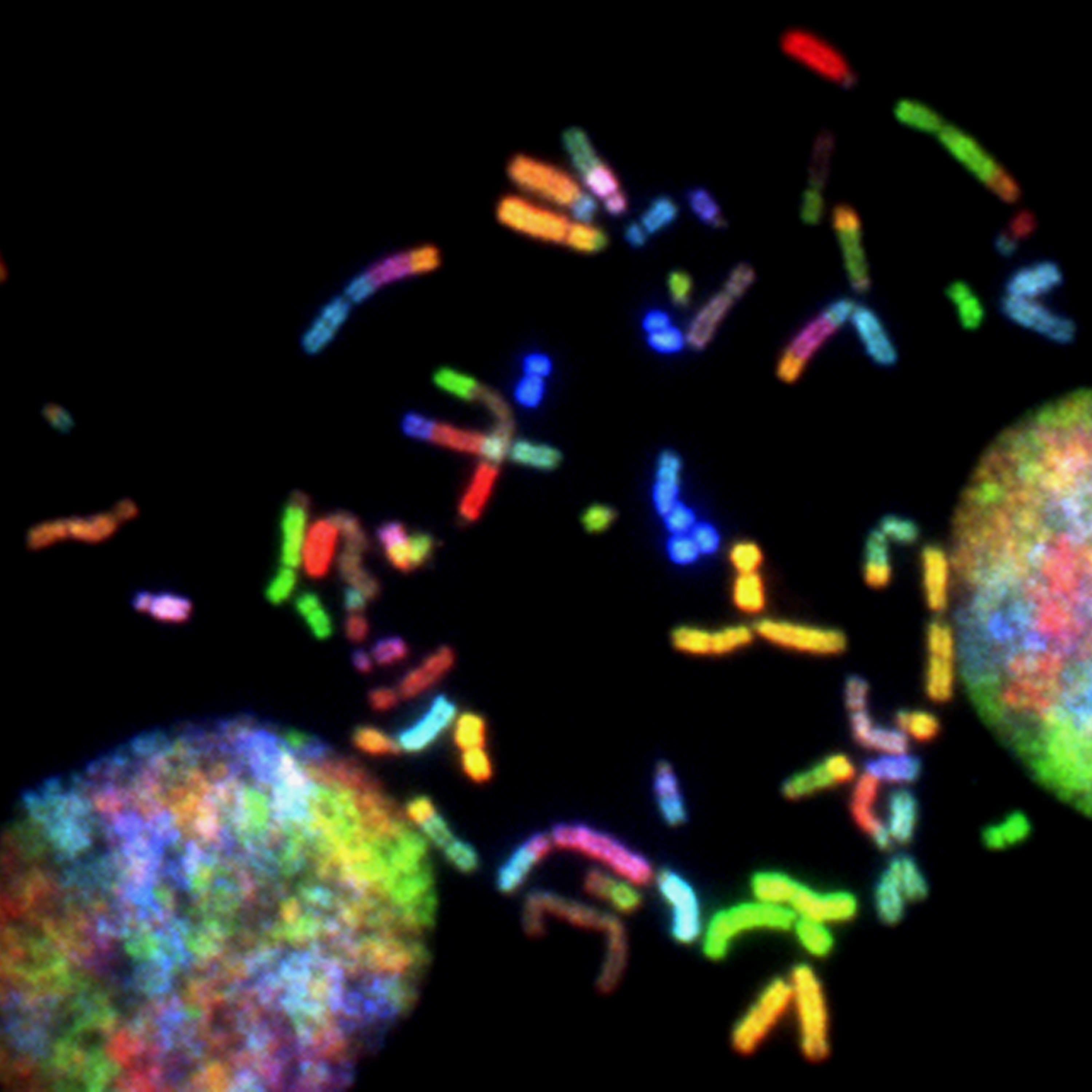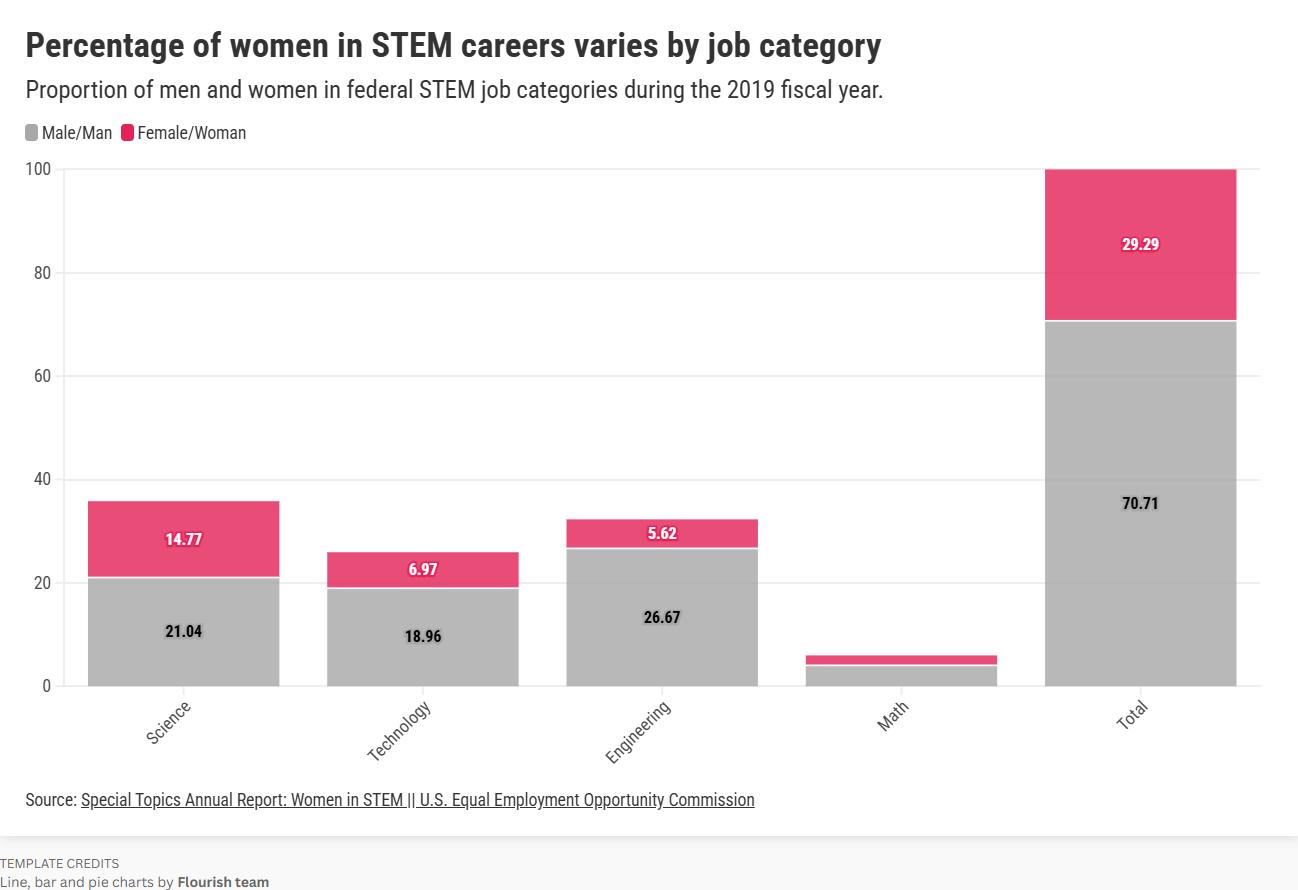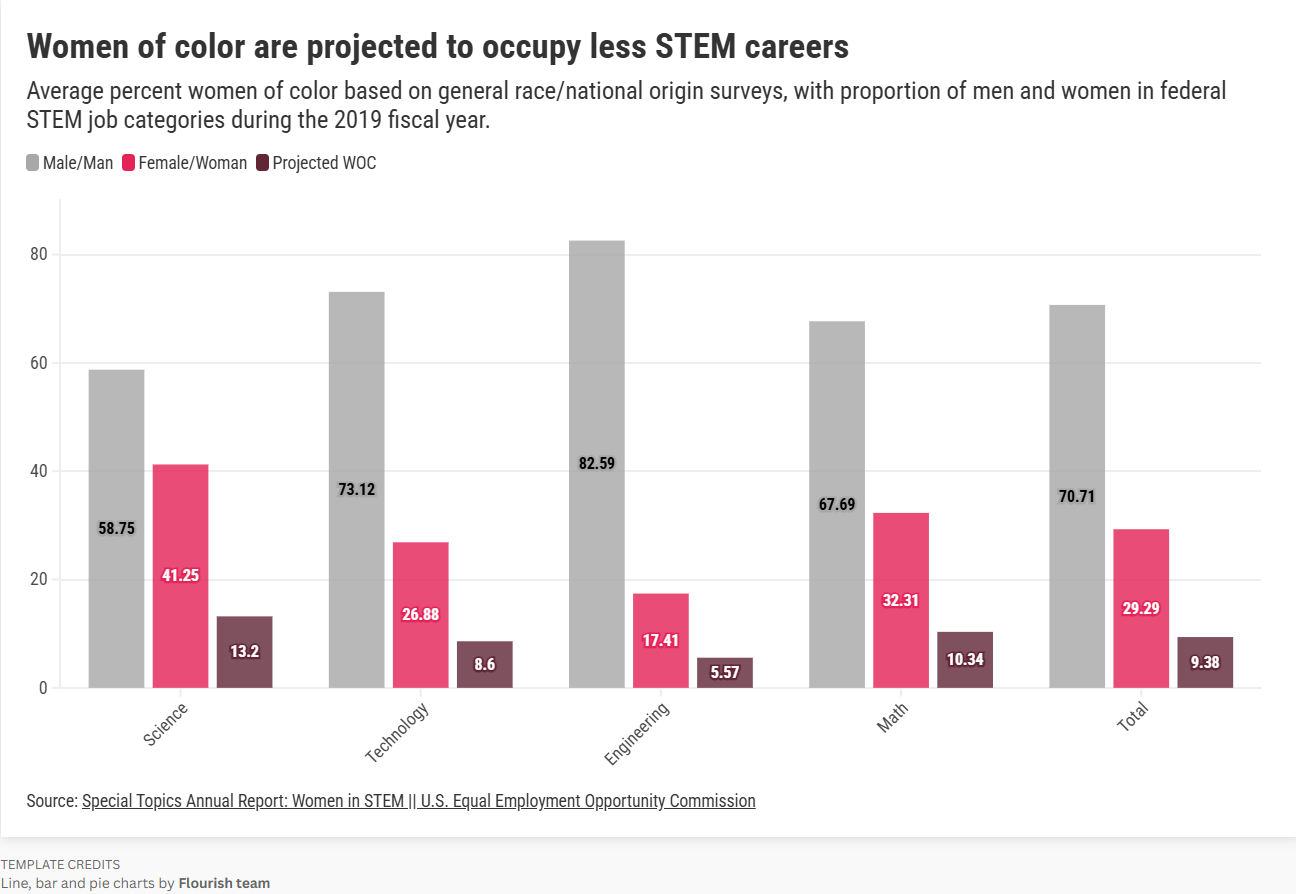Women of color lie at the crossroads of barriers to entry in STEM

Throughout the years, science, technology, engineering and mathematics (STEM) have had a refresh as fields, with diversity-focused “STEM intervention programs” (SIPs) appearing in colleges nationwide. These programs aim to foster greater inclusion of women and/or underrepresented minorities, yet there continues to be a lack of gender and racial parity in STEM. Additionally, women of color (WOC) face the brunt of both disparities.
Women accounted for less than 30% of STEM federal workers, and most of these women are white, according to a 2019 special report from the U.S. Equal Employment Opportunity Commission. Much of the research available is quantitative, showing the “what” of WOC in STEM, but what about the “who?” Everyday WOC continue to face the barriers that have been examined for decades, with no end in sight — especially with the current federal administration working to roll back diversity, equity and inclusion (DEI) initiatives. The experiences of WOC in STEM provide valuable insights to barriers to success and hope for solutions.
"Science is for everyone. Innovation is for anyone, and if you’re meant to do it, you 100% should get the chance to do it."
Sakshi Joglekar
While STEM is often referred to as a whole, there is variation within — such as the larger (still disproportionate) number of women in science (roughly 41%) compared to those in math (approximately 32%). In terms of occupations, women remain underrepresented with the exception of health-related fields, which the Pew Research Center reports as heavily overrepresented by women.
These numbers do not take race or ethnicity into account, however. Projecting an even distribution of WOC highlights that they are severely underrepresented across STEM — even within women-dominated occupations. Alissa Wuorinen, who received her Master of Science degree in medical and molecular genetics from a genetic counseling program and is currently a cancer genetics counselor, noted that her field is predominantly white, albeit more active about facing these challenges head-on.
“I think I have been a little bit lucky that the field tends to be more progressive, and talks about those things more [regarding diversity] and is more aware and welcoming [...] but you know, until things do really change more, it’s still pretty obvious in a lot of ways that there are things that could be better,” Wuorinen said.
With this wide range of representation, community within an individual field can be difficult. Of the three women interviewed, all of them mentioned the importance of community within STEM — although the need for commonality through race/ethnicity and gender was more notable than for being in the same specific STEM field.
“It did help to have other people in the field that were also minorities who weren’t, you know, directly in the same environment as me, but just to use as resources, or to ask questions to or get their experiences and insights,” Wuorinen said. “It definitely helps knowing that people were in the same exact position at one point, or are in the same exact position.”
"[...] Even if I had never met any of those people in person, or even if I didn’t contribute to those posts and discussion boards all the time, it was definitely nice to know that out in the universe somewhere people were there, they were existing. They had similar experiences. And I think just kind of knowing that there is that solidarity, even if it’s not in your immediate presence — that was a big help at the time, and I think still is a good resource to have now."
Alissa Wuorinen


As representation varies across race/ethnicity, so does average pay. The same Pew Research Center report shows that, while STEM occupations pay higher wages compared to other occupations, women overall are paid less. Additionally, the pay gap white workers and Black and Hispanic workers in STEM has increased. Black and Latina/Hispanic women were also pointed out in a 2015 report, where Latina women consistently reported that their assertiveness was seen as part of the ‘hot-blooded’ stereotype, and Black women consistently reported the need to prove themselves repeatedly. This indicates that these groups are in need of additional outreach.
While there are several educational barriers to women in STEM, research indicates that the proportion of STEM degrees earned varies across race/ethnicity and degree type. Another barrier exists between education and employment.
Andrea Martinez, a Venezuelan women who has an MS in Marine and Environmental Affairs and is currently a project manager for Coastal Quest, pointed to unsustainable research opportunities.
“Research is a very male-oriented field, especially a white male field and, for example, in undergrad, you usually don’t get paid to do research. Most people of color, especially women people of color — they can’t work for free, you know.” Martinez said. “For me, I had to work full-time as a server while being a full-time student, so I wasn’t able to do research in undergrad, and I feel like that put me back a lot while a lot of my white, male peers were able to do research.”
Martinez highlighted the U.S. National Science Foundation’s Research Experiences for Undergraduates (REU) program as part of her success, as some offerings were diversity-forward, prioritizing access for minorities in STEM. She was able to gain valuable research experience because of this.


“I didn’t know how much of an impact seeing a woman — and a woman of color, at that — in a very high achieving, like C-suite level, executive position, would make to my own career.”
Sakshi Joglekar, an Indian woman currently pursuing her MS in Bioscience Management at the Worcester Polytechnic Institute, mentioned that one of the greatest barriers is the lack of network women of color experience, and mentioned the need to find support both within and outside of her major.
Martinez and Joglekar mentioned that seeing women of color in positions of power in STEM was especially empowering to them.
Sakshi Joglekar, an Indian woman currently pursuing her MS in Bioscience Management at the Worcester Polytechnic Institute, mentioned that one of the greatest barriers is the lack of network women of color experience, and mentioned the need to find support both within and outside of her major.
Martinez and Joglekar mentioned that seeing women of color in positions of power in STEM was especially empowering to them.
“I didn’t know how much of an impact seeing a woman — and a woman of color, at that — in a very high achieving, like C-suite level, executive position, would make to my own career.”
With these barriers, what solutions are available? Wuorinen mentioned diversity education initiatives that started conversations as a positive experience for her, and mentioned that these conversations can happen anywhere, formally or informally. Being listened to was also a large point that these women mentioned for allies to keep in mind.
On a larger scale, Joglekar and Martinez point to DEI as a whole. Joglekar mentioned that tangible actions showcasing the inclusion of women of color is stronger than words, and that empowerment needs to be framed as a net positive.
“I think that the first step is sort of redefining that definition of empowerment within the group itself, and sort of framing it in a way that it creates a platform of equality where everyone’s voice in the team is equally heard,” she said.
Martinez noted the need to ensure all aspects of DEI, not just diversity.
"In order for diversity in STEM to really be effective, when you’re looking at DEI, the three — diversity, equity, inclusion — all need to happen, because if [only] one happens, it’s not going to be successful."
- Andrea Martinez -
STEM benefits from diverse perspectives and experiences that can encourage creativity, problem-solving, teamwork and innovation. Any step toward parity for women of color in STEM is a step toward a future of better research for the next generation of WOC scientists and for society as a whole.



